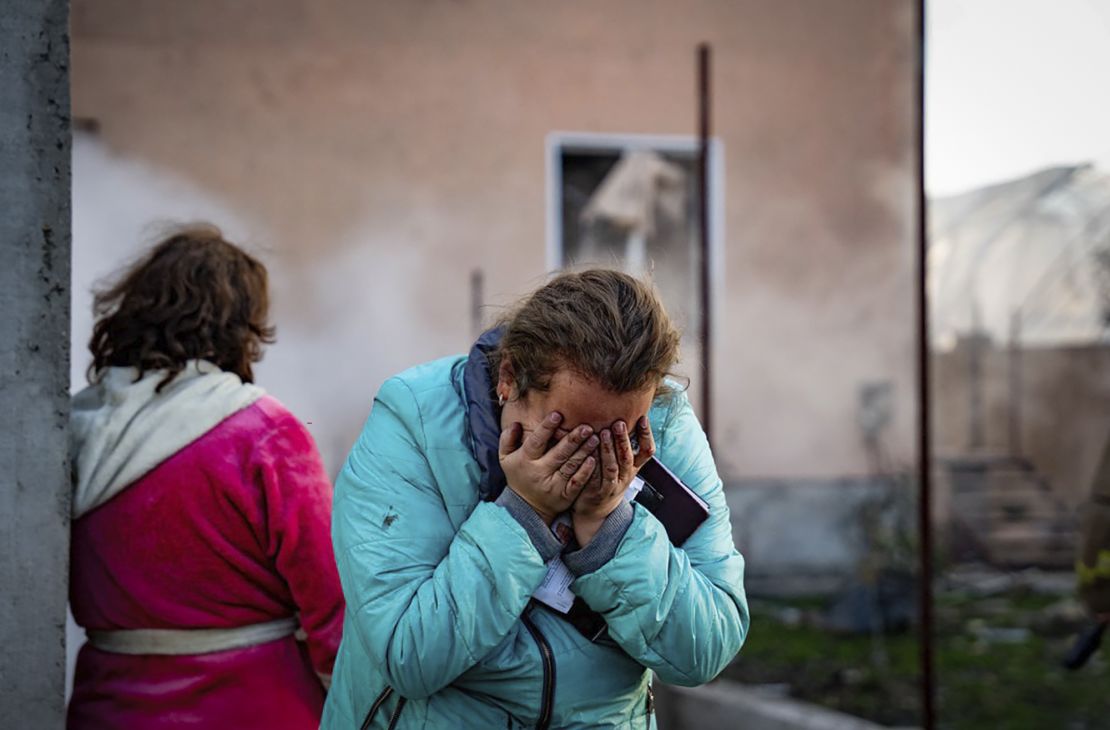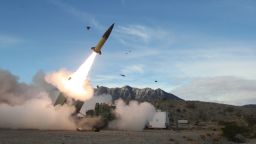President Vladimir Putin has updated Russia’s nuclear doctrine, two days after his US counterpart Joe Biden granted Ukraine permission to strike targets deep inside Russia with American-made weapons.
Under the updated doctrine, Moscow will consider aggression from any non-nuclear state – but with the participation of a nuclear country – a joint attack on Russia.
The change comes as Russia claims Ukraine fired the US-made ATACMS missiles into the Russian region of Bryansk. The attack, if confirmed, would mark the first such use by Ukraine since Biden gave the green light.
The Russian government had previously signaled that the US approval would be a dangerous escalation of the war in Ukraine, now 1,000 days old.
The Kremlin began this fresh round of nuclear saber-rattling Tuesday, saying the revised military doctrine would in theory lower the bar to first use of nuclear weapons.
In a phone call with reporters, Kremlin spokesperson Dmitry Peskov noted the changes mean that “the Russian Federation reserves the right to use nuclear weapons in the event of aggression using conventional weapons against it and/or the Republic of Belarus.”
Nuclear deterrence is a pillar of Russian military doctrine, but the revision appears to broaden the definition of what would be considered aggression against Russia.
“An important element of this document is that nuclear deterrence is aimed at ensuring that a potential adversary understands the inevitability of retaliation in the event of aggression against the Russian Federation or its allies,” Peskov said.
The revised doctrine is clearly meant to send a strong signal to Ukraine’s Western backers about the risks of escalation – and make policymakers and the public think twice about the possible consequences of providing more sophisticated and far-reaching weaponry to Ukraine.
But Russia has also escalated its own campaign against Ukraine in recent days, blanketing the country with drone and missile attacks that seem aimed in part at destroying civilian energy infrastructure as winter approaches.

Russia’s doctrinal change follows a consistent pattern of threatening rhetoric that has persisted since the beginning of the full-scale invasion of Ukraine.
After French President Emmanuel Macron said earlier this year that he would not rule out sending Western troops to Ukraine, Putin ordered a tactical nuclear weapons drill in response to what he called “threats” by the West.
Russia’s warnings around Western deliveries of military aid to Ukraine have become almost a matter of routine since the run-up to the full-scale invasion in February 2022.
The Kremlin has warned about “enormous risks” around the delivery of F-16 fighter jets, “serious consequences” for sending Patriot air-defense systems and has expressed fury over sending Western tanks to Ukraine.
But the revision of the nuclear doctrine appears designed to add a new level of credibility to Russian threats of escalation, particularly as a new administration prepares to take office in Washington.
Shifting red lines
Since Russia launched its full-scale invasion, it has lowered the threshold under which it would consider using nuclear weapons.
In a 2020 update to the nuclear doctrine – before the war began – Putin said Moscow reserves the right to use nuclear weapons “when the very existence of the state is threatened.”
But changes outlined in September this year appeared to lower that threshold, saying Moscow could use nuclear weapons when facing “a critical threat to its sovereignty.”
Tuesday’s decree refines the circumstances in which Russia might resort to nuclear weapons. It essentially restates and makes official the terms set out in September’s proposed revision, which said Moscow would consider any assault on it supported by a nuclear power to be a joint attack. This updates the list of conventional weaponry whose launch might constitute a critical threat, and specifies an attack on Belarus would be viewed on an equal footing to Russia.

Russian officials responded furiously to reports that the Biden administration had lifted its years-long prohibition on Ukraine’s use of ATACMS – American weapons capable of striking targets deep in Russia.
Speaking Monday, Peskov said the move showed Biden wanted to “throw oil on the fire and escalate the conflict in Ukraine.”
However, the incoming administration of US President-elect Donald Trump may complicate the Kremlin’s reaction to Biden’s decision to green-light Ukraine’s use of ATACM missiles.
Trump, who will take office in just over two months, has said he wants to bring the war in Ukraine to a swift end, but has not specified how he will do so.
Although Trump has not yet commented on Biden’s decision, his son, Donald Trump Jr., has criticized it.
“The Military Industrial Complex seems to want to make sure they get World War 3 going before my father has a chance to create peace and save lives,” he said on social media.





